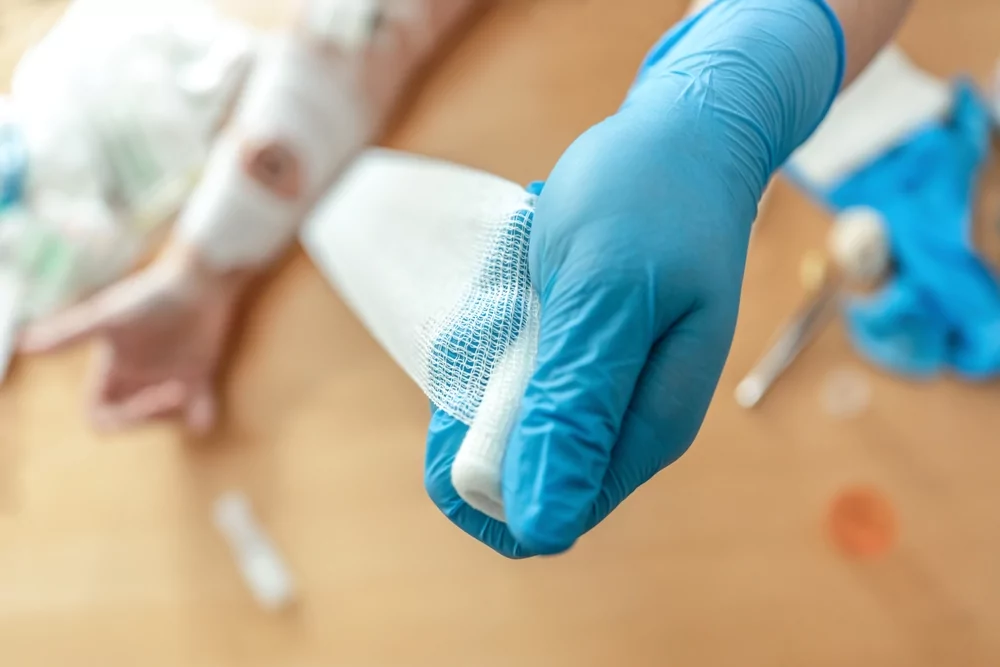Why Do Bedsores Occur?
Abuse and Neglect, Bedsores, Nursing Home AbuseUnderstanding Pressure Ulcers: Are They a Sign of Nursing Home Neglect?
Pressure ulcers, commonly known as bedsores or decubitus ulcers, should be exceedingly rare in any nursing home that adheres to recommended care guidelines.
The presence of these sores often indicates a breach in patient care, which could amount to nursing home abuse or neglect.
South Carolina residents afflicted by bedsores have recourse in both federal and state laws. These laws mandate that nursing homes maintain a level of care that protects the safety and well-being of their residents.
Should a nursing home fail in this aspect, it could face legal consequences, and affected residents may seek financial and other forms of redress.
If your loved one shows signs of bedsores, contact a South Carolina nursing home abuse attorney today at 843-790-2808.
What Are Bedsores?
Pressure sores, or bedsores, develop due to continuous pressure on an area of skin, particularly around bony areas like the elbow, heel, or buttock. This pressure disrupts blood flow, causing the skin and underlying tissue to deteriorate.
In advanced cases, these sores can even reach muscle and bone. The most susceptible areas are bony parts of the body, where the muscle and bone have less cushioning.
Nursing homes have been known to argue that patients’ bedsores were not the product of negligence or abuse. Statements such as these should never be accepted at face value.
These painful, potentially life-threatening sores are all too common in nursing home patients, but they should never be seen as inevitable. They can almost always be traced back to substandard medical care.
Are Beds Sores Caused by Poor Hygiene?

A question frequently asked is whether bedsores or pressure ulcers can be attributed to poor hygiene.
The answer is not straightforward but leans towards yes, poor hygiene can contribute to the development and worsening of pressure ulcers, although it’s not the sole factor.
Improper hygiene can lead to moisture build-up, creating an environment where bacteria can thrive. This can accelerate the skin’s degradation, making it more susceptible to the formation of pressure ulcers.
Moist conditions can result from soiled linens or diapers, sweat, or improper wound care – all of which are often observed in nursing home settings where staff may not be vigilant about cleanliness.
Poor hygiene is usually part of a larger picture of neglect in nursing homes. Inadequate staffing or insufficient training often means that even basic care guidelines are not followed.
Bedridden residents may not be repositioned frequently enough to relieve pressure on vulnerable areas of the body, or they may not receive proper nutritional support.
These factors can combine with poor hygiene practices to increase the risk of developing pressure ulcers.
According to the South Carolina Department of Health and Environmental Control Regulation 61-17, maintaining cleanliness and proper hygiene is part of the mandatory training for nursing home staff.
This is because cleanliness is directly related to the quality of care and the well-being of residents. When standards are not met, nursing homes may be held liable.
While poor hygiene alone may not cause bed sores, it significantly heightens the risk and often indicates broader issues of neglect.
If you suspect a loved one’s bed sores are a result of neglectful care and poor hygiene practices, it may be time to consult an experienced attorney.
What are the Stages of Pressure Ulcers?
Healthcare providers use a four-stage classification system to assess the severity of bed sores and pressure injuries:
- Stage One: The affected skin reddens but doesn’t tear. Pain is usually present.
- Stage Two: The skin begins to break, and the sore might look like a scrape or blister.
- Stage Three: The sore worsens, extending into the underlying soft tissue.
- Stage Four: This is the most severe stage, where the sore reaches the muscle and bone, causing irreversible damage.
Negligence, Abuse, and Bedsores in South Carolina Nursing Homes
Negligence and bedsores also tend to go hand-in-hand. If you aren’t sure whether you or your loved ones have been the victim of medical negligence, consider whether the victim was subject to any of the following circumstances:
- Lying in damp linens
- Lack of mobility
- Infrequent or non-existent health and wellness checks
- Denial of access to adequate nutrition and hydration
- Not checking for pre-existing medical conditions like diabetes or septic arthritis
- Incontinence leading to damp skin
- Malnutrition or dehydration
- Failure to notify staff or family
A Nursing Home’s Role in Preventing Bedsores
To prevent pressure ulcers, nursing home staff needs to change the resident’s position every 2 hours and adjust wheelchair positions every 15 minutes. This helps to relieve pressure on vulnerable areas since it does not take long for bedsores to form.
Moreover, mattresses and cushions designed to redistribute prolonged pressure can be used as preventive measures.
A well-hydrated and well-fed patient is less likely to develop these sores, as proper nutrition and hydration improve skin integrity.
The Role of the Care Team
The care team has a significant role to play in both the prevention and management of bedsores.
Protocols should include regular health and wellness checks, immediate changing of soiled diapers and wet linens, and adequate training to identify dead tissue and address bedsores early.
Nursing home patients in South Carolina must, by law, be treated in ways that exemplify a resident-centered and resident-directed approach.
This means that residents and their families should feel that their voices are heard if they express concerns or point to signs of abuse.
It also means that no resident should ever be left in any situation that could lead to bedsore development (extended periods of unmonitored time are one good example of this).
Legal Avenues
Nursing homes not only have an ethical responsibility but also a legal obligation to prevent and treat bedsores adequately.
If you or a loved one suffer from pressure ulcers due to neglect or abuse, consult a personal injury attorney immediately.
An experienced nursing home abuse lawyer can guide you through the intricacies of the legal system and help you seek the financial redress you are entitled to including medical treatment for your loved one.
South Carolina Nursing Home Regulations
According to South Carolina law, nursing homes in South Carolina are required to offer ongoing training to their staff, ensuring that they can meet the diverse needs of their residents effectively. Failure to comply with these guidelines can result in severe penalties for the facility.
If you or someone you know is experiencing bedsores due to nursing home neglect or abuse, it’s vital to act quickly. Connect with an attorney familiar with these matters to explore your options.
Contact a South Carolina Nursing Home Abuse Attorney
If you or someone you know is grappling with the repercussions of bedsores due to subpar nursing home care, taking immediate action is essential.
Bedsores are often a telling symptom of neglect or even abuse, and you have the right to hold the responsible parties accountable for their actions.
In South Carolina, specific laws and regulations safeguard the rights and well-being of nursing home residents.
These standards are in place to ensure that each resident receives the care they need. Unfortunately, these guidelines are not always followed, which puts vulnerable individuals at risk.
Navigating the complexities of a nursing home abuse case requires a clear understanding of state and federal laws, as well as how to effectively pursue a claim for damages.
An experienced South Carolina nursing home abuse attorney can guide you through the legal maze, providing essential insights on gathering evidence, dealing with insurance companies, and ultimately fighting for your rights in court if necessary.
Time is often of the essence. Don’t hesitate to reach out to a knowledgeable attorney who can assess the specifics of your situation, and help you take the necessary steps toward ensuring justice is served.
For a consultation or to discuss your case, contact the South Carolina nursing home abuse attorneys at Hughey Law Firm by calling 843-790-2808 or by clicking here to get in touch with a lawyer online.
Your health and dignity are too important to leave to chance. Act now to protect your rights and those of your loved ones.
Nathan Hughey, an attorney and fourth-generation South Carolinian, founded Hughey Law Firm in 2007. Before that, he spent five years defending nursing homes and insurance companies. Leveraging his experience, he now advocates for those injured or wronged by such entities, securing over $290 million in verdicts and settlements.
